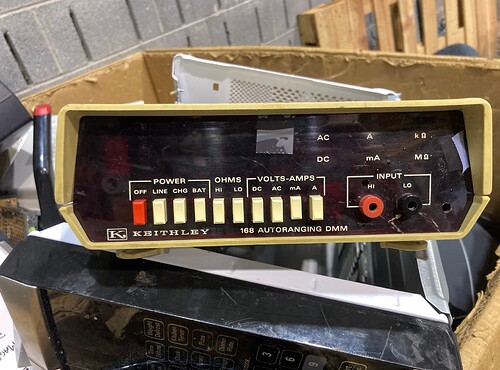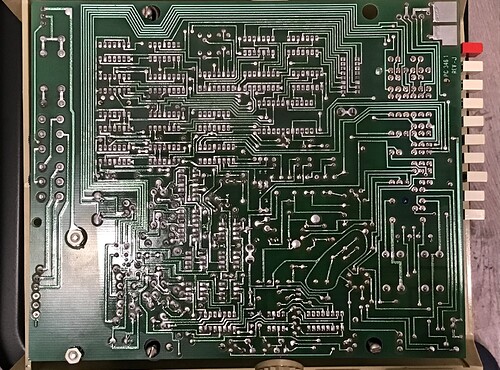Yes. that is right. I have a Keithley 168 scope
that is in unknown condition.
I had found the old manual here, which is very helpful in my attempts to figure out the connections for the battery header, but got me absolutely nowhere.
Because according to the schematics (manual above), there are 7 1.2V battery connected from pole D to pole C (with pole C supposedly at 8.4V), and two more connected from pole A to pole B (with pole B supposedly at 4.8V)
However, the section "how to check batteries" invalidate the previous assumptions because the test pad B is connected to pole C (which is supposedly 0V, connected to the negative lead of the two BA-29 batteries), as shown on the picture of the PCB.
Which means that either figure 8 is wrong, or Table 2-2 and the description is wrong.
Which lead to my attempt to figure out which battery lead is connected to "ground", so I start to probe the battery pins and the "Lo" pin (or GND).
So far, I have found that pin A is connected to GND when the device is NOT in "CHG" mode. Which is supported by the fact that when charging, the battery is connected in series (manual). Which suggest that the two BA-29 battery should be connected from A to B (B being the positive end of the BA-29), rather than the other way around and also validates the fact that the battery probe is on pole B.
So to summarize, this is my current conclusion. Black means confirmed, and blue means unknown.
Let me know if you have any thoughts over the orientation of the batteries (marked in blue).
The voltage requirements require a bit of finesse. I have 9V batteries and Li-ion batteries, as well as AAA batteries and USB input.
My current idea is to use a 2S lithium battery, one across D and C (supplying 4.2V, which is below the recommended 4.8V but way above the "low battery" of 2.5V) and another one across B and A (supplying another 4.2V, which is 8.4V). The two batteries at normal discharge sits at 3.7V, which when in series give 7.2V, still above minimum.
However, I currently have only one .. nevermind. I can "borrow" the one from my Ti calculator. Let me know if you think this idea (of a 2S li-Ion) will work or not.









